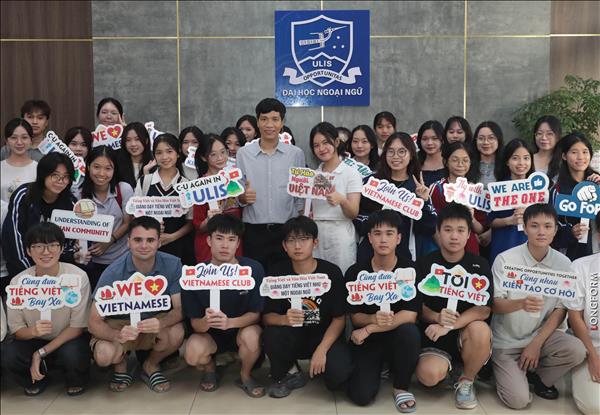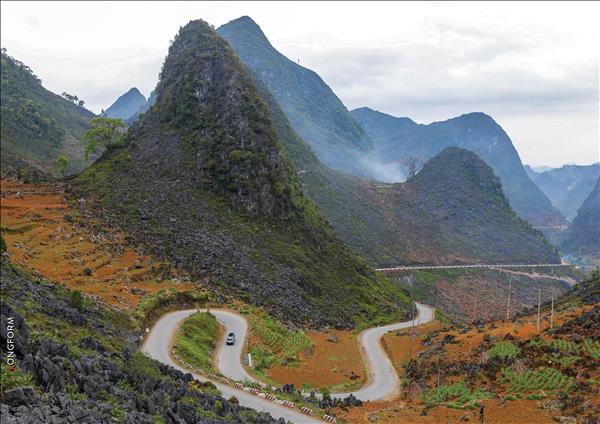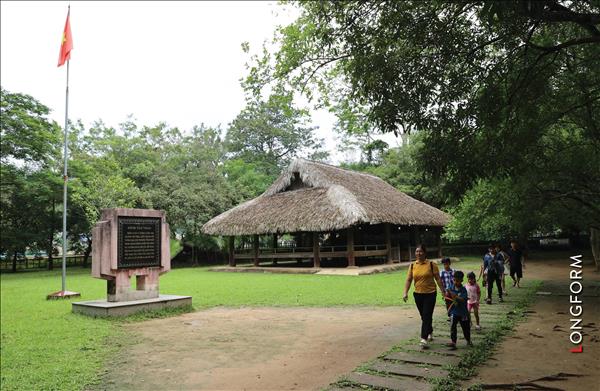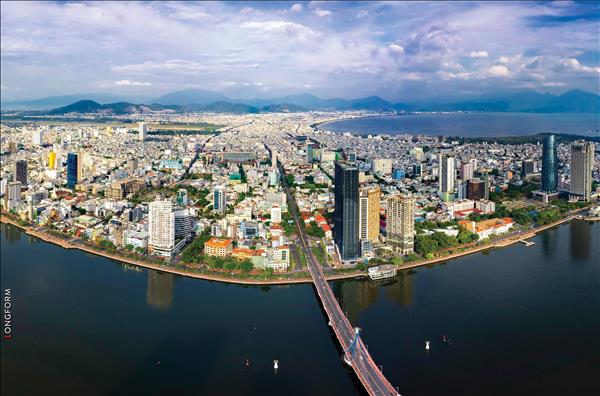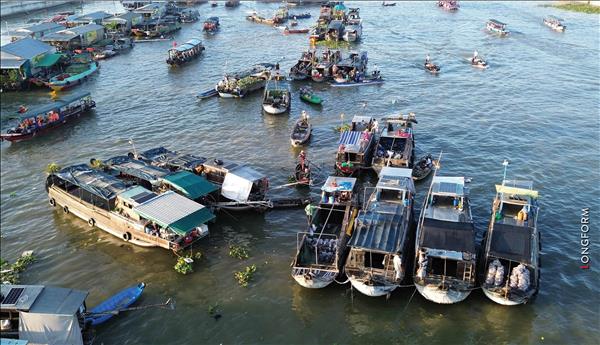After seven years of construction, the Son La Hydropower Plant, the largest project in Southeast Asia has come into being, earlier than scheduled. This project is not only the pride of the country but it also marks an outstanding growth of the electric sector of Vietnam today.
Epic of the Northwest
The Son La Hydropower Plant, dubbed a project of the century, is situated in It Ong Commune, Muong La District of Son La Province where the Da River runs. Few people know that nearly 10 years ago in the place where the plant is situated now there was Pa Vinh Hamlet with about 30 houses of the Thai ethnic people.
We went to Son La at the time when the plant was busily preparing for its inauguration. The cold breeze of the last winter days seemed to be dispelled by the jubilant atmosphere of a great festival of this northwestern area.
For those who have been a part of the “breath of the Da River” for almost 10 years, this is a moment of joy and happiness. Over 20,000 households of the ethnic groups in Dien Bien, Son La and Lai Chau Provinces have voluntarily moved to other areas to live, leaving their land for the construction of the plant. Tens of thousands of workers and engineers have stuck to the construction site for seven years despite their difficult living conditions and the harsh weather. The most prideful fact is that all items of the project have been designed and built by the Vietnamese workers who have devoted their minds and hearts for the project.
With a total investment of 60 trillion dong, the Son La Hydropower Plant with a designed capacity of 2,400 MW and six generators has been completed much earlier than scheduled, bringing huge economic benefits. Every year it will create a turnover of 500 million dollars and save over five million tonnes of coal to produce an equivalent amount of electricity. Moreover, the plant will supply on average 10.2 billion kWh/year to the national grid.
At the time the Son La Hydropower Plant was inaugurated, its workers were preparing to go to build a new hydroelectric project in Lai Chau. Before leaving, they paid tribute to their colleagues who had laid down their lives here for the electricity of the country. Hundreds of workers sat along the plant’s dam to pray for their souls and inform them about the early completion of the plant after more than 2,000 hard, but very glorious working days.
Talking about the workers who had been part of this special project, Bui Phuong Nam, Head of the Technical Department of the Son La Plant Management Board said: “To have this project of the century, we have suffered sacrifices and losses. The requiem ceremony today is aimed to commemorate those who have devoted all of their efforts, minds, blood and flesh to the Son La Hydropower Plant, contributing to creating the epic of the Da River.”
In his speech delivered to thousands of workers, engineers and local people at the inauguration ceremony, Prime Minister Nguyen Tan Dung warmly praised the people in Son La, Dien Bien and Lai Chau Provinces for yielding their land for the construction of the plant. He also praised the cadres and workers of the construction company who had made great efforts to constructing the work.
The Son La Hydropower Plant coming into operation not only contributes to solving the energy problem of the country in the period of industrialization and modernization, but also has a great economic, political and social significance. The project has provided opportunities for the northwestern area to upgrade and rebuild its infrastructure, improve the eco-environment, control floods, supply water for irrigation in the low land, ensure security and defence in the northwest, arrange and stabilize the life of thousands of ethnic people in the mountainous areas, helping them develop their economy and improve their life.
Miracle of Vietnamese workers
Immediately after the inauguration ceremony, Nghiem Cong Tan, Deputy Head of the Management Board’s Technical Department led us to visit the plant. Upon getting out of the Management Board’s building he pointed to a long bridge in the distance and said proudly: “Perhaps, in the history of the electricity sector of Viet Nam there has never been a hydroelectric project with so many “strange” factors as the Son La Hydropower Plant. To prepare for the ceremony of breaking the ground and blocking the river on December 2, 2005 as planned by the Party Central Committee, the entire contingent of engineers and workers had to race against time as well as the weather and the floods to complete this 500m-long bridge together with 125km of roads, a system of nearly 200 km of 110-220KV, nearly 60,000m2 of houses for thousands of workers and many other facilities, such as the flow-conducting systems and upstream and downstream dykes. Such amount of initial work is worthily a miracle!”
We entered the lift to go down to the depth of nearly 40m. Engineer Tan led us to visit six operating generators, each weighing tens of tonnes, a central control system and the equipment for monitoring the operations of the generators. He told us about the work of the cadres, engineers and workers at the construction site who had to work in three shifts through days and nights despite the severe weather to complete a huge amount of work. He still remembers the impressive numbers: over 16.6 million cubic metres of rocks and earth were excavated; over 20 million cubic metres of rocks and earth were transported; millions of metres of earth for the foundation were rammed; nearly 6 million cubic metres of concrete were built; and 115,000 tonnes of equipment were installed. He cited many other numbers which astonished us.
Leaving the plant, we visited the dam. While we walked along the dam which is as high as a gigantic mountain lying across the superb Da River, Tan said: “If the Son La hydroelectric project is like a blooming flower in the upstream area of the northwest, the hydroelectric dam is like a living body and the ‘soul’ of the plant.”
We were told that to build this dam, the engineers proposed to apply a construction method using the roller compacted concrete (RCC), an advanced technology of the world that Vietnam had never used to build a hydroelectric plant before. At first, many people were worried and said the technology should not be used for an important project of the country like the Son La Hydropower Plant. Finally, after many debates, the use of the roller compacted concrete technology was adopted. The Vietnamese specialists went to many countries to learn about this technology, and at the same time invited the world’s leading experts to come to Vietnam to observe. Then, the production lines of the modern roller compacted concretes were imported from Germany and Japan. Built by a contingent of skilled workers who were proficient in using advanced technologies, after 32 months, the major dam of the project was complete with 2.7 million cubic metres of concrete and has become the largest dam in Southeast Asia. It is 961.6m long and 228.1m high and has a reserve capacity of over 9.26 billion cubic metres of water.
With all their hearts and minds as well determination, bravery and solidarity, the cadres, engineers and workers have joined their efforts and complied with the regulations to put the six turbines into operation ahead of schedule and ensure the required quality. The successful construction of the Son La Hydroelectric Plant showed the strong growth of the hydroelectric sector in Vietnam in general and the mechanical engineering sector in particular.
We left It Ong at sunset. Seen from above, the Da River winds its way through the green mountains which look dusky in mist. The Son La hydroelectric dam lying across the river is curbing the fierce waves running downstream, forcing them to obey the will of the people to bring electricity for the country.
The Son La Hydropower Plant, dubbed a project of the century, is situated in It Ong Commune, Muong La District of Son La Province where the Da River runs. Few people know that nearly 10 years ago in the place where the plant is situated now there was Pa Vinh Hamlet with about 30 houses of the Thai ethnic people.
We went to Son La at the time when the plant was busily preparing for its inauguration. The cold breeze of the last winter days seemed to be dispelled by the jubilant atmosphere of a great festival of this northwestern area.
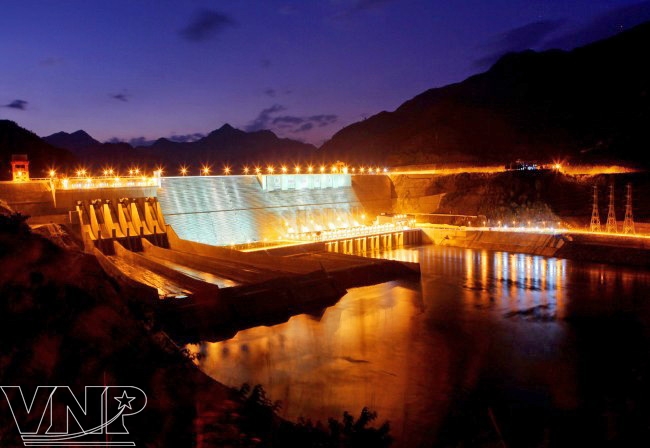 The Son La Hydropower Plant is brilliant at night. Photo: Ngoc Ha - VNA 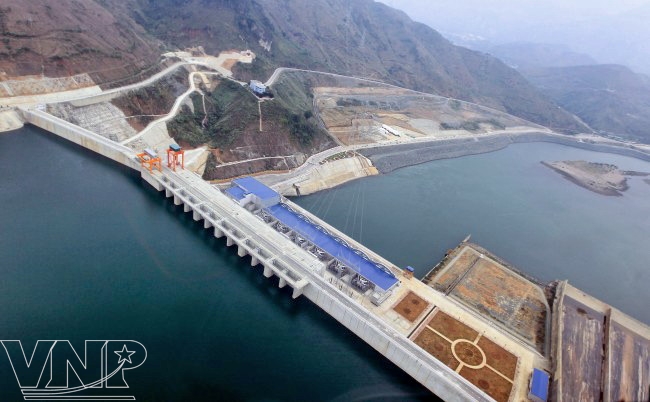 Panoramic view of the Son La Hydropower Plant. Photo: Duc Tam - VNA 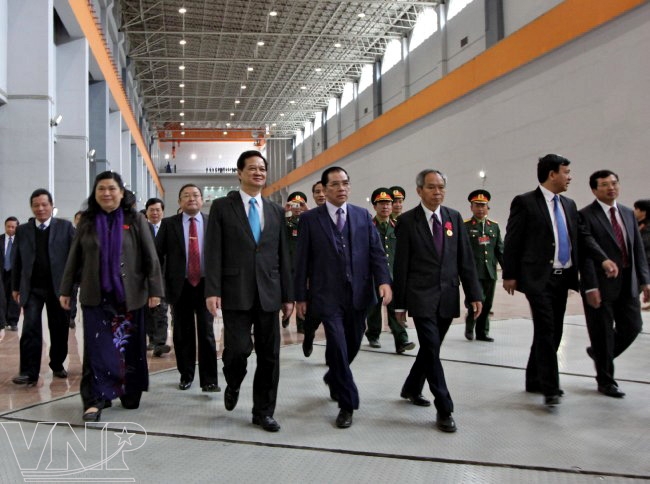 Prime Minister Nguyen Tan Dung and delegates visit the Son La Hydropower Plant. Photo: Ngoc Ha - VNA 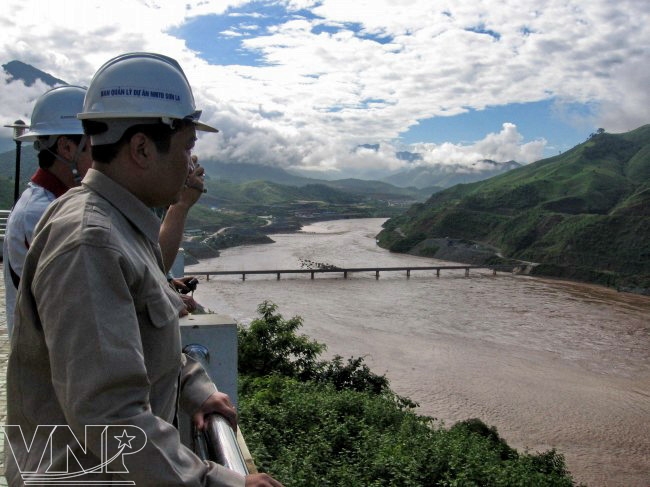 Muong La Bridge, the lower section of the Da River seen from the plant. (Photo: Thong Thien) 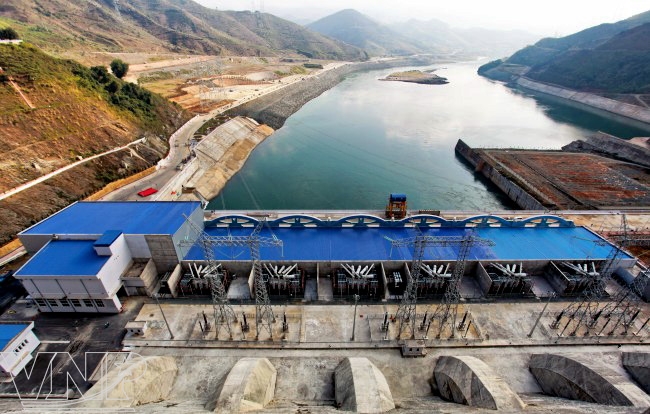 The lower section of the Da River seen from the Son La Hydropower Plant. Photo: Viet Cuong 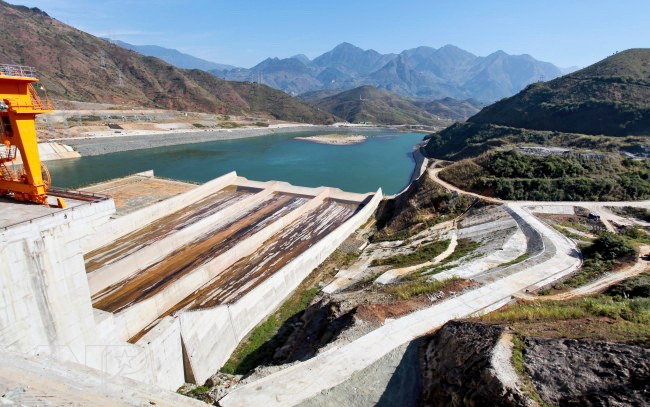 The flood outlet of Son La Hydropower Plant’s dam. Photo: Viet Cuong 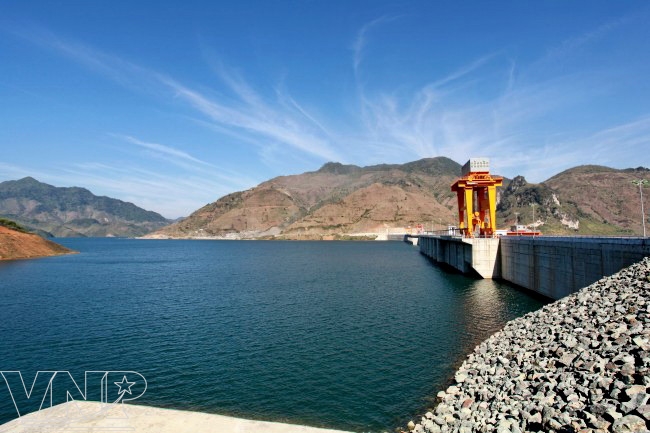 Son La water reservoir has a capacity of 9.26 billion cubic metres of water. Photo: Viet Cuong 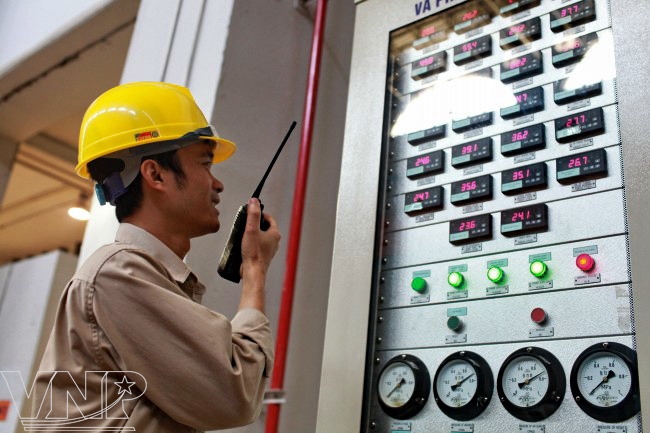 Supervising the turbine operating system. Photo: Viet Cuong  Six generators with a capacity of 2,400 MW supply over 10 billion kWh/year. Photo: Dieu Chinh Toi - VNA 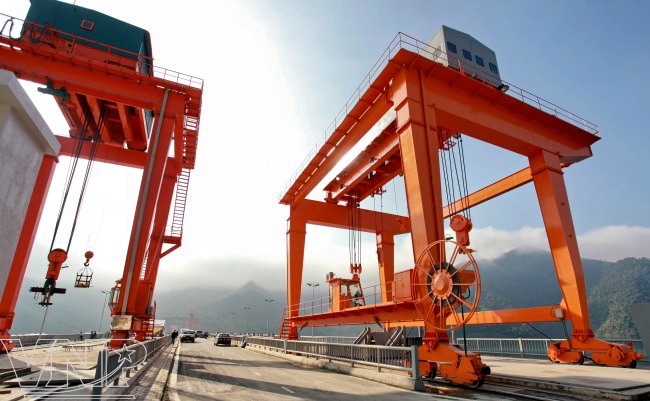 A crane system takes water into the hydropower plant. Photo: Viet Cuong 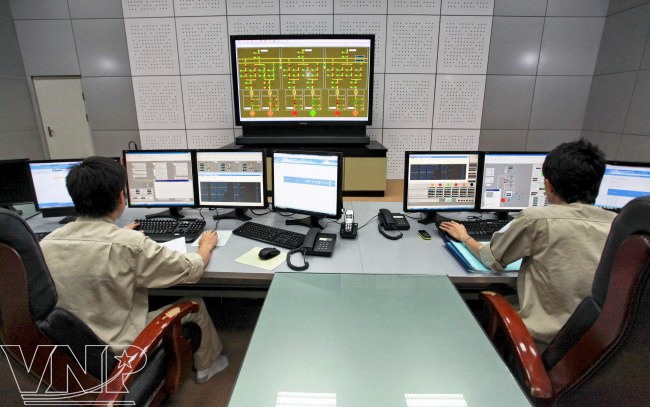 The control centre of the Son La Hydropower Plant. Photo: Viet Cuong 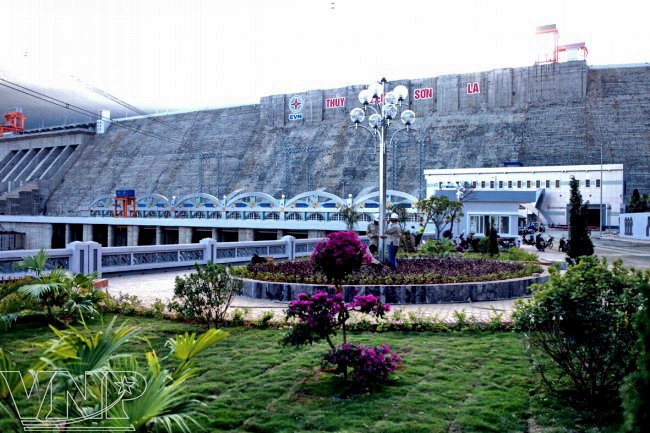 The precinct of the Son La Hydropower Plant. Photo: Dieu Chinh Toi - VNA 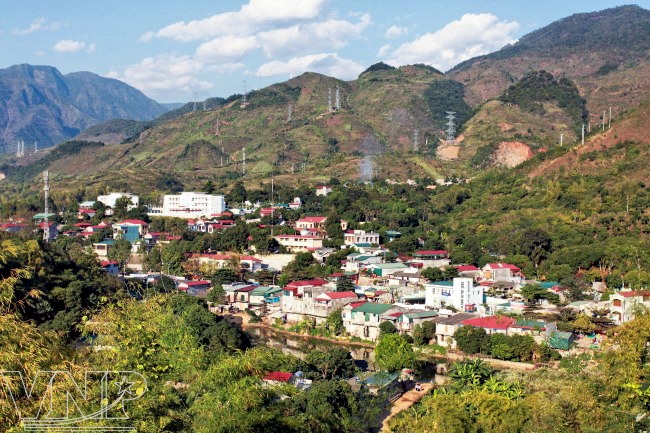 Present-day Muong La Town. Photo: Viet Cuong |
| «... With a capacity of 2,400 MW/year, the Son La Hydropower Plant produces over 10 billion KWH, making a great contribution to the national modernization and industrialization. |
With a total investment of 60 trillion dong, the Son La Hydropower Plant with a designed capacity of 2,400 MW and six generators has been completed much earlier than scheduled, bringing huge economic benefits. Every year it will create a turnover of 500 million dollars and save over five million tonnes of coal to produce an equivalent amount of electricity. Moreover, the plant will supply on average 10.2 billion kWh/year to the national grid.
At the time the Son La Hydropower Plant was inaugurated, its workers were preparing to go to build a new hydroelectric project in Lai Chau. Before leaving, they paid tribute to their colleagues who had laid down their lives here for the electricity of the country. Hundreds of workers sat along the plant’s dam to pray for their souls and inform them about the early completion of the plant after more than 2,000 hard, but very glorious working days.
Talking about the workers who had been part of this special project, Bui Phuong Nam, Head of the Technical Department of the Son La Plant Management Board said: “To have this project of the century, we have suffered sacrifices and losses. The requiem ceremony today is aimed to commemorate those who have devoted all of their efforts, minds, blood and flesh to the Son La Hydropower Plant, contributing to creating the epic of the Da River.”
In his speech delivered to thousands of workers, engineers and local people at the inauguration ceremony, Prime Minister Nguyen Tan Dung warmly praised the people in Son La, Dien Bien and Lai Chau Provinces for yielding their land for the construction of the plant. He also praised the cadres and workers of the construction company who had made great efforts to constructing the work.
The Son La Hydropower Plant coming into operation not only contributes to solving the energy problem of the country in the period of industrialization and modernization, but also has a great economic, political and social significance. The project has provided opportunities for the northwestern area to upgrade and rebuild its infrastructure, improve the eco-environment, control floods, supply water for irrigation in the low land, ensure security and defence in the northwest, arrange and stabilize the life of thousands of ethnic people in the mountainous areas, helping them develop their economy and improve their life.
Miracle of Vietnamese workers
Immediately after the inauguration ceremony, Nghiem Cong Tan, Deputy Head of the Management Board’s Technical Department led us to visit the plant. Upon getting out of the Management Board’s building he pointed to a long bridge in the distance and said proudly: “Perhaps, in the history of the electricity sector of Viet Nam there has never been a hydroelectric project with so many “strange” factors as the Son La Hydropower Plant. To prepare for the ceremony of breaking the ground and blocking the river on December 2, 2005 as planned by the Party Central Committee, the entire contingent of engineers and workers had to race against time as well as the weather and the floods to complete this 500m-long bridge together with 125km of roads, a system of nearly 200 km of 110-220KV, nearly 60,000m2 of houses for thousands of workers and many other facilities, such as the flow-conducting systems and upstream and downstream dykes. Such amount of initial work is worthily a miracle!”
We entered the lift to go down to the depth of nearly 40m. Engineer Tan led us to visit six operating generators, each weighing tens of tonnes, a central control system and the equipment for monitoring the operations of the generators. He told us about the work of the cadres, engineers and workers at the construction site who had to work in three shifts through days and nights despite the severe weather to complete a huge amount of work. He still remembers the impressive numbers: over 16.6 million cubic metres of rocks and earth were excavated; over 20 million cubic metres of rocks and earth were transported; millions of metres of earth for the foundation were rammed; nearly 6 million cubic metres of concrete were built; and 115,000 tonnes of equipment were installed. He cited many other numbers which astonished us.
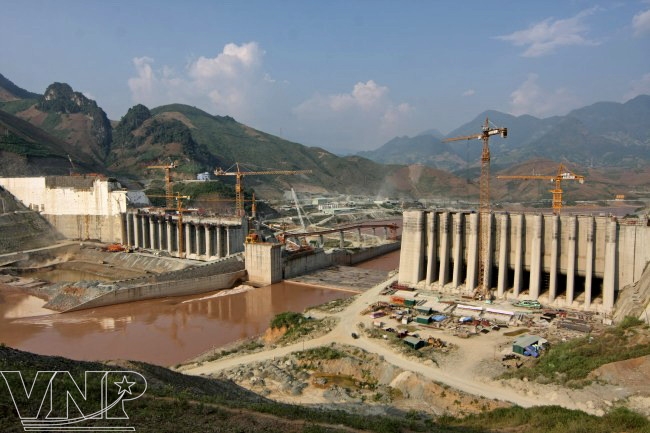 The Son La Hydropower Plant started construction in 2005. Photo: Thong Thien 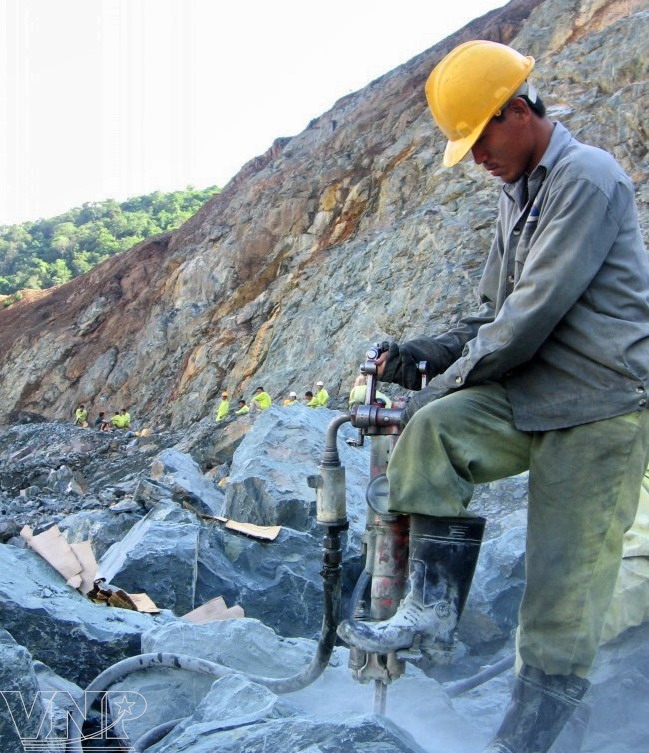 Mining rocks for the construction of the project. Photo: Thong Thien. 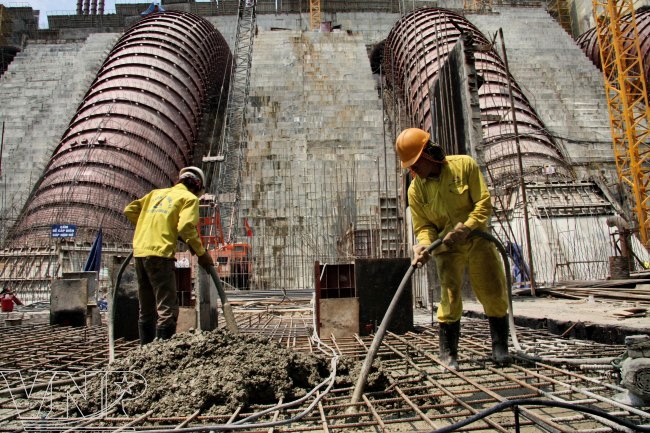 Pouring concrete to build the hydropower plant’s dam. Photo: Thong Thien 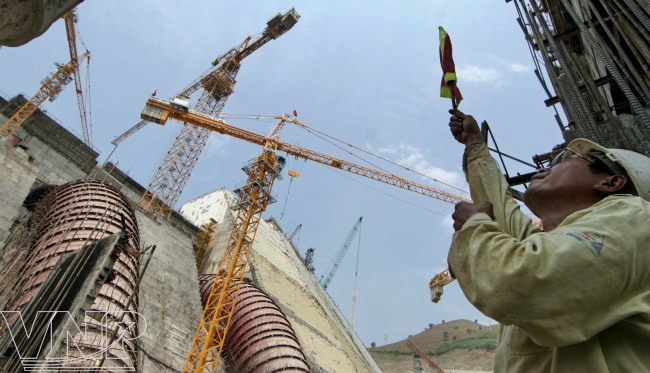 Controlling the crane system. Photo: Thong Thien 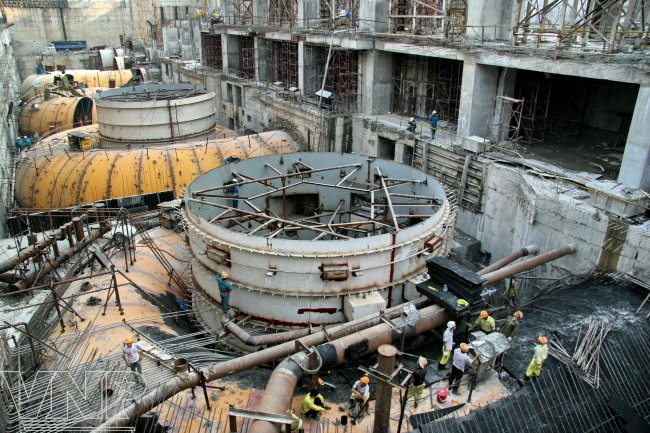 Preparing the installation of the turbines. Photo: Thong Thien 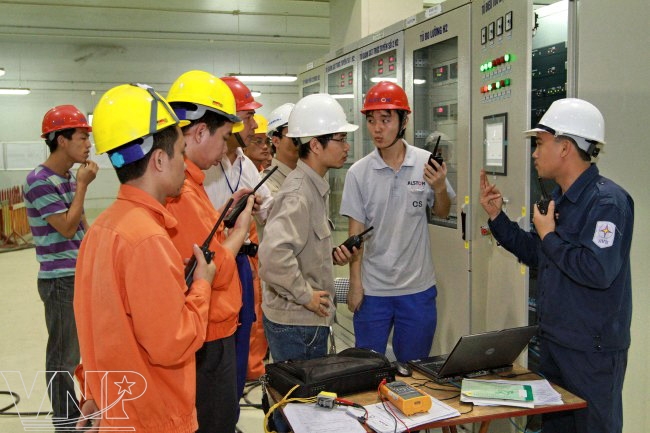 Engineers check the technical parameters of the 5th generator. Photo: Ngoc Ha- VNA 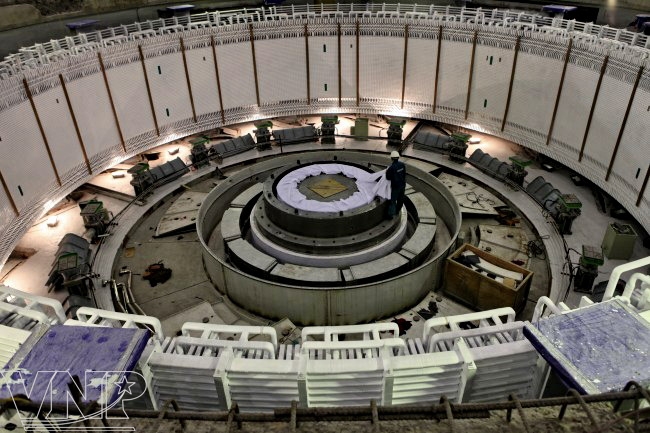 The 6th generator before being completed. Photo: Ngoc Ha- VNA 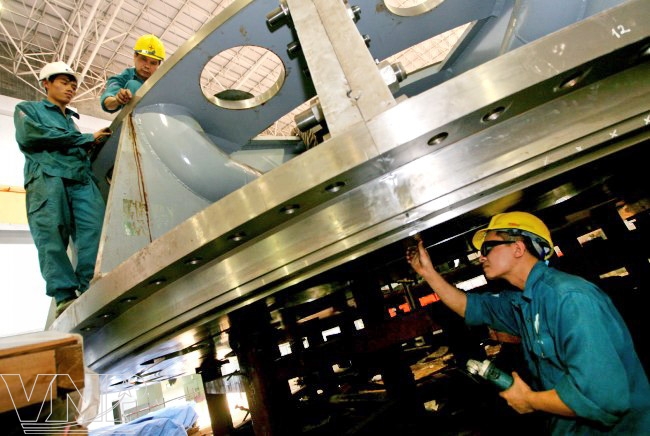 The 6th generator is completed by skilled workers. Photo: Ngoc Ha- VNA |
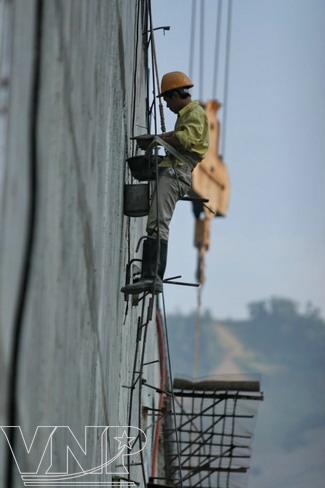 Dealing with the issue of waterproofing the dam. Photo: Thong Thien |
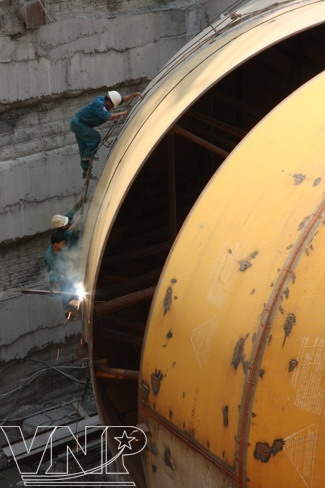 Fixing the joints in a high pressure tube. Photo: Thong Thien |
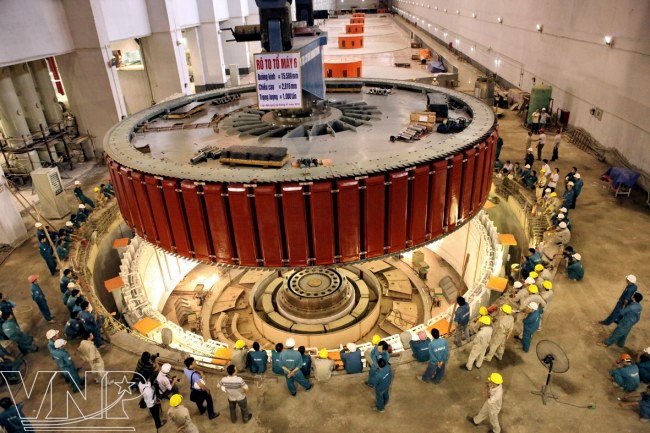 Assembling the rotor of 1,000 tonnes for the 6th generator. Photo: Ngoc Ha- VNA 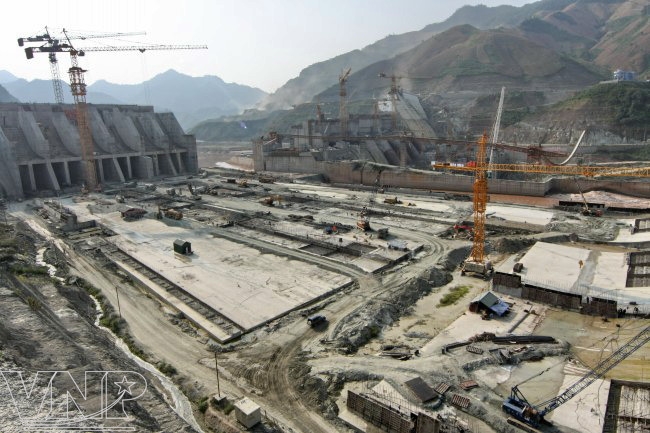 A part of the Son La Hydropower Plant during the construction. (Photo: Thong Thien) 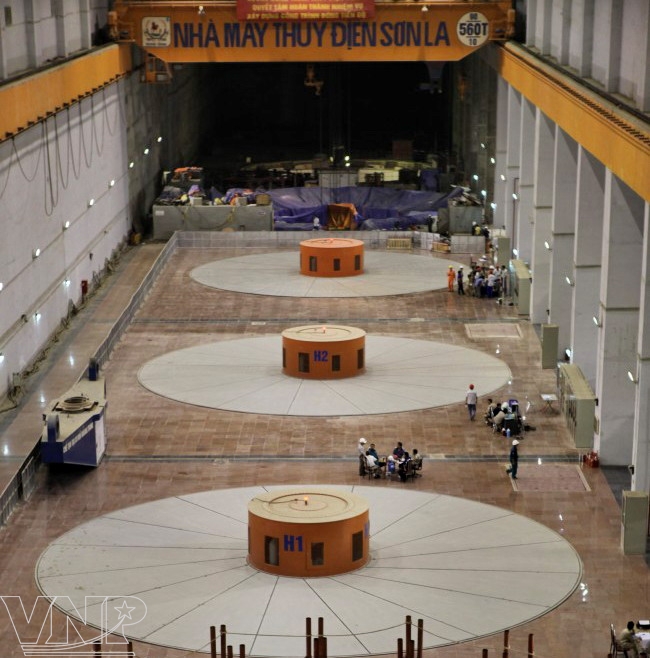 The generators of the Son La Hydropower Plant are almost completed. Photo: Dieu Chinh Toi- VNA |
Leaving the plant, we visited the dam. While we walked along the dam which is as high as a gigantic mountain lying across the superb Da River, Tan said: “If the Son La hydroelectric project is like a blooming flower in the upstream area of the northwest, the hydroelectric dam is like a living body and the ‘soul’ of the plant.”
We were told that to build this dam, the engineers proposed to apply a construction method using the roller compacted concrete (RCC), an advanced technology of the world that Vietnam had never used to build a hydroelectric plant before. At first, many people were worried and said the technology should not be used for an important project of the country like the Son La Hydropower Plant. Finally, after many debates, the use of the roller compacted concrete technology was adopted. The Vietnamese specialists went to many countries to learn about this technology, and at the same time invited the world’s leading experts to come to Vietnam to observe. Then, the production lines of the modern roller compacted concretes were imported from Germany and Japan. Built by a contingent of skilled workers who were proficient in using advanced technologies, after 32 months, the major dam of the project was complete with 2.7 million cubic metres of concrete and has become the largest dam in Southeast Asia. It is 961.6m long and 228.1m high and has a reserve capacity of over 9.26 billion cubic metres of water.
With all their hearts and minds as well determination, bravery and solidarity, the cadres, engineers and workers have joined their efforts and complied with the regulations to put the six turbines into operation ahead of schedule and ensure the required quality. The successful construction of the Son La Hydroelectric Plant showed the strong growth of the hydroelectric sector in Vietnam in general and the mechanical engineering sector in particular.
We left It Ong at sunset. Seen from above, the Da River winds its way through the green mountains which look dusky in mist. The Son La hydroelectric dam lying across the river is curbing the fierce waves running downstream, forcing them to obey the will of the people to bring electricity for the country.
Story: Ngan Ha - Photos: Thong Thien, Viet Cuong, VNA’s files
bdAnh

